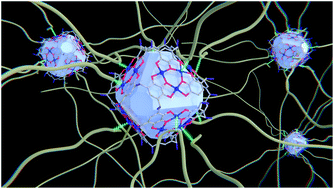Engineering plasticization resistant gas separation membranes using metal–organic nanocapsules†
Abstract
Membrane technologies hold great potential for industrial gas separation. Nevertheless, plasticization, a common phenomenon that is responsible for the loss of gas pair selectivity and the decrease of membrane lifespan, is one of the top challenges withholding the deployment of advanced membrane materials in realistic applications. Here, we report a highly generalizable approach, that utilizes PgC5Cu, a copper metal–organic nanocapsule (MONC) containing 24 open metal sites (OMSs) as a multi-dentate node to coordinatively crosslink polymers. By adding merely 1–3 wt% of PgC5Cu, a wide range of carbonyl group-containing polymers can be effectively crosslinked. Through rigorous dissolution tests, molecular dynamic simulations, and in situ FT-IR spectroscopy, we qualitatively and quantitatively unveiled the coordinative binding nature at the polymer–MONC interface. As a result, we produced a series of composite membranes showing near complete plasticization resistance to CO2, C2H4, and C2H6 under high pressure with no loss of mechanical and gas transport properties.



 Please wait while we load your content...
Please wait while we load your content...